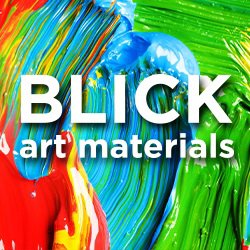Art is an integral part of game design and development. The aesthetic appeal of a game can greatly influence its success, and as technology evolves, so does the art of creating visually captivating games.
One such evolution in game art is the integration of traditional printmaking techniques into digital art, effectively transforming paper to pixels. This amalgamation not only brings a unique visual experience to players but also opens up a new world of creative possibilities for game artists.
Table of Contents
The Artful Fusion: Incorporating Printmaking Techniques into Game Art
In the broad and colourful spectrum of the art world, printmaking holds a distinctive place. Traditionally, this artistic domain revolves around creating works by printing, primarily on paper.
Distinct printmaking techniques have evolved over centuries, each carrying its unique visual hallmarks. These techniques include, but are not limited to, etching, screen printing, woodcut, and lithography.
The convergence of these traditional art forms with the dynamic world of game art results in a unique synthesis that enriches the aesthetic dimension of games, adding a fresh layer of depth, texture, and visual intrigue.
Breathing Life into Backgrounds: The Role of Etching Techniques in Game Art
Etching is a time-honoured printmaking technique that has been used by artists for centuries. This method requires an artist to incise a design onto a surface using a sharp object, resulting in a print that’s rich with detail and depth.
When these etching techniques are ingeniously applied in the realm of digital art, they can yield truly captivating game backgrounds.
Take the “Truth or Dare” game. In a game that hinges heavily on narrative and player interaction, the use of etching techniques could lead to the creation of intricate and atmospheric backdrops.
These enhanced environments can pull players further into the game world, making their experiences more immersive and engaging. The resulting depth and detail added by etching techniques breathe life into the game’s virtual environment, subtly enhancing the gameplay experience.
Colouring Characters to Life: Screen Printing in Game Character Design
Screen printing, another technique inherited from traditional printmaking, has a significant role to play in game art – specifically in character design. This technique employs a mesh screen and ink to create striking images, which when applied to character design, can result in unique and visually stunning results.
Screen printing’s unique ability to produce bold colours and create stark contrasts makes it an invaluable tool in a game artist’s toolkit. It enables the design of game characters that stand out, both in terms of their visual appeal and their ability to resonate with players.
The vibrant colour schemes and bold textures born out of screen printing can breathe life into characters, transforming them from mere pixels on a screen to memorable figures that players connect with. This connection ultimately enhances player engagement, enriching the overall gaming experience.
From Aesthetics to Experience: The Transformative Impact of Printmaking Techniques on Game Aesthetics
The influence of printmaking techniques in game art transcends the realm of pure aesthetics. This fusion, which creates a mesmerising visual symphony, also profoundly impacts the broader gaming experience.
This impact permeates several critical aspects of a game, including its gameplay, narrative structure, and the level of player engagement. By adding depth, detail, and a unique visual flavour to the game art, these printmaking techniques can transform the gaming experience into an immersive journey that players cherish.
Charting the Course: Enhancing Gameplay through Visual Cues
The magic of printmaking techniques, when seamlessly incorporated into game art, can provide a significant boost to gameplay. One way it does this is by contributing valuable visual cues that guide players as they navigate the game world.
Techniques such as etching and screen printing, known for their ability to create detailed textures and contrasts, can be employed strategically to indicate interactive game elements or areas of interest.
These visually distinctive cues can guide players on their path, subtly informing them where to go next or drawing attention to important aspects of the game.
This not only makes the gameplay more intuitive but also adds a layer of visual discovery, encouraging players to pay closer attention to the game’s artistry while simultaneously enhancing their overall gaming experience.
Weaving the Tale: Strengthening Narrative with Artistic Styles
Beyond gameplay, printmaking techniques also have the power to enrich a game’s narrative. The distinct artistic styles born out of printmaking techniques can be potent storytelling tools within a game’s universe.
Different printmaking styles can evoke a range of moods, serving to set the tone for various chapters or scenes within the game.
These styles can also signify diverse locations within the game world, helping players distinguish between different settings. These techniques can be used to visually narrate character development, subtly depicting transformations in characters through evolving artistic styles.
This fusion of narrative and art creates a more immersive story experience, drawing players deeper into the game world. By strengthening the narrative component of the game in this manner, printmaking techniques not only enhance the visual aesthetic but also enrich the storytelling, making the game a memorable and engaging experience for players.
Navigating the Creative Terrain: Challenges and Opportunities in Combining Printmaking and Game Art
Merging the world of printmaking techniques with game art is akin to exploring new artistic frontiers. It promises an enriching journey full of new creative avenues, but like any exploration, it also presents its own unique set of challenges and opportunities. These span the gamut from technical constraints to creative innovation, each requiring its own distinct approach.
Walking the Tightrope: Balancing Artistic Vision and Technical Constraints
One of the main challenges that arise when merging printmaking techniques with game art is striking the right balance between the artistic vision and the realities of technical constraints.
While these techniques can bring a unique richness to game art, transforming these elaborate designs into a digital format that can be implemented within a game engine often requires meticulous planning.
Highly detailed art can pose significant performance challenges, potentially leading to issues like longer loading times or frame rate drops. Therefore, game artists and developers need to work closely together to ensure that the artistic vision does not compromise the smooth functioning of the game.
This delicate balance requires careful optimization and can often lead to a creative interplay between art and technology, pushing both to their limits in service of creating an immersive gaming experience.
New Horizons: Opportunities for Innovation
Despite these challenges, the fusion of printmaking techniques with game art holds a treasure trove of opportunities for innovation. It presents game artists with a unique canvas to reimagine traditional game aesthetics and to create games with distinctive visual identities.
The incorporation of these techniques allows artists to venture beyond conventional digital art, infusing their game with a texture and depth that sets it apart. Furthermore, it opens up new possibilities for visual storytelling, helping to create a more immersive and emotionally engaging experience for players.
In the end, this amalgamation of printmaking and game art presents an opportunity for artists to truly push the boundaries of what is possible in game design. It invites them to break free from the usual confines of digital art and explore a world rich with textures, contrasts, and a unique visual language that can make each game a unique and memorable piece of interactive art.
Final Remarks
The intersection of traditional printmaking techniques and game art is a testament to the evolving nature of art and technology.
As artists continue to explore and integrate these techniques, we can expect to see games that are not only visually stunning but also enriched in terms of gameplay and narrative.
So, the next time you delve into a game, take a moment to appreciate the artistry behind those captivating pixels.









